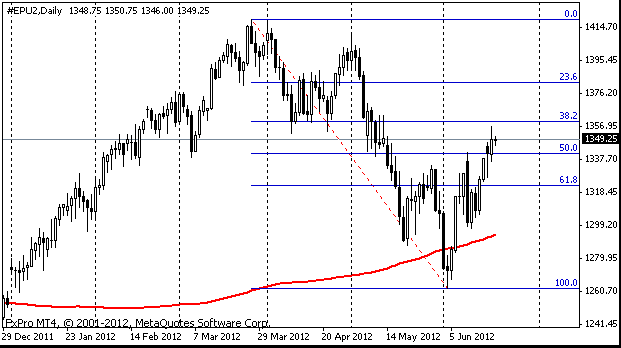EUR/usd
Yesterday the single currency hit a fresh 2yr low below 1.21 and on Monday it was down at 1.2067. It's worth mentioning that then, in mid 2010, this two-year low didn't last for long. EUR/USD was trading below 1.22 just for a couple of weeks, having registered the minimum of 1.1876. Now trading is held just 2% from those minimums. However, at that time the market participants were more optimistic than now. In 2010 they believed that the EU leaders would manage to keep the situation under control. Now this belief is almost gone. The gangrene has already spread from Greece to a number of other countries, aggravated the decline of manufacturing activity in the whole region and made some core countries take up austerity measures. Moreover, even the highest credit rating of Germany is under threat. As Moody's reported yesterday on the closing of US session, the rating outlook of Germany was revised down. The same is with the rating outlooks for Netherlands and Luxemburg. Besides, the EU consumer confidence index has registered decrease for the second time running – it sank down to -21.6, the lowest level since August 2009. As you remember, we've already compared the situation of this spring to that in 2009. It seems that this analogy is now true only for economic affairs and business sentiments. At that time the euro was steadily growing, but now it is helplessly floundering in the area of multi-year lows. The only short-term comfort could be found in today's attempt to cover the gap formed at the beginning of the week. But to do that EUR/USD should grow up to 1.2150. Yet, further we may see another march down, which can be caused by a poor Spanish auction. 3-month and 6-month bond auctions are scheduled for today. They may prove to be a good test of investor confidence about the short-term stability in Spain.

GBP/USD
Surprising enough, but the sterling turned out to be one of the main victims of the market decline yesterday. From the very opening of trading the pound was rolling down like a snowball. Eventually, having started the day at 1.5620, the currency hit a low of 1.5480. By now, however, it has managed to get above 1.55. From a broader perspective, GBP/USD has been trading flat between 1.54 and 1.5750. If this channel is still in place, the pound has some potential to fall, which also goes in line with our expectations of further risk aversion after a slight correction this afternoon.

USD/JPY
Apparently, investors and traders decided not to go too far with the yen, preferring to buy USD/JPY on the decline below 78.0. Actually, the yen is and will be in demand on risk aversion, but not for long. At the first opportunity it is exchanged for other safe currencies. The yen is not a safe haven for capitals, but just a stopover at the impulse of risk aversion.

Though the decline of stock exchanges on Friday and Monday was really drastic, we don't see anything terrible in S&P 500. The index is fluctuating within a broad upward corridor and the Monday drop turned into cautious stock purchases. On the whole the corporate reports look rather good, though of course they don't bear any comparison with the pre-crisis time. Now S&P 500 futures points at the index rate of 1344, and in case of further growth the target may prove to be at 1380.
